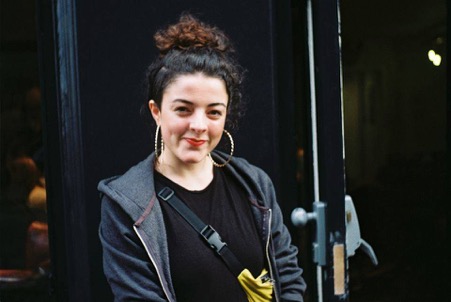I came across these magazines when researching the topic of my most recent written assessment. By now, I have carried an intense fascination with the sexual socio-political climate of the Weimar Republic for a couple of years. On the course ‘Reassembling Modernism: Artists’ Networks in Europe 1909-1960’ as an undergraduate, I was introduced to Weimar culture when we examined the Neue Frau in the Berlin of the 1920s. It was a text by Maria Makela entitled ‘New women, new men, new objectivity’, however, that truly peaked my interest in the subject.

This year, I revisited the Neue Frau and explored her myth and ideological potential whilst considering her as a phenomenon of cosmopolitanism—in relation to class, gender and violence in the city. Makela’s essay was my starting point, and these magazines gave me an example of how the Neue Frau’s multi-faceted identity was utilised to develop a progressive symbol of gender subversion. The Neue Frau/neue frauen is the German adaptation of the New Woman. The New Woman was a female figure, a new gender type, who emerged in modern society towards the end of the nineteenth century, becoming a popularised construct in the first half of the twentieth century.

The Neue Frau was a fashionable woman who adopted traditionally heteronormative, ‘masculine’ traits within her dress identity to disassociate herself from the pre-WWI woman. Her image epitomised modern femininity, but it also effectively mirrored how interwar Germany perceived itself to be under cultural threat from the masculinisation of a ‘New’ generation of emancipated women. In the pages of queer publications, however, the Neue Frau’s image was represented without ridicule or cynicism. It was interesting to reconfigure my own perception of her image after months of aligning it with the caricatured parody that male, Neue Sachlichkeit artists had painted her to be.

In the case of the women depicted in Liebende Frauen (1927-1930), the tensions felt nationwide between opposing genders are made redundant. At the time of the1929/30 issue, Liebende Frauen was one of two lesbian magazines in Berlin; the other, the more widely-known Die Freundin (The Girlfriend: Journal for Ideal Friendship between Women) had been in circulation since 1924. Art historian Heike Schader notes that Liebende Frauen is most likely a reprint of the magazine Frauenliebe (Women Love); which in turn was renamed Garçonne in 1930.

In the above image, a cover dated 1929, the female subject sports a bubikopf—a haircut strongly associated with the Neue Frau, which translates directly to ‘boy’s head’ and was reconfigured into numerous variations, such as the shortened and smoothed ‘Eton crop’, similar to that of Louise Brooks’ Lulu in Pandora’s Box. The overlapping strings of pearl necklaces that decorate her neck, the draped cut of her neckline and way in which her face is coquettishly turned from the camera’s gaze tells the reader that this Neue Frau, like Brooks’ Lulu—will not apologise for claiming her own sexuality. This cover presents allure and a conscious play on the provocation of desires, celebrating the figure of the New Woman by virtue of her dress and demeanour.
These covers are truly wonderful examples of how the New Woman, specifically the homosexual New Woman, found alternative means of how her image could be disseminated in popular culture via ways less damaging to her personhood. Each cover is a portal into an important history for women, and they each contribute to the Neue Frau as a social construct: one that was repeatedly well-documented until the Weimar Republic’s fall.
To see more of these wonderful covers, go to the Spinnboden Lesbenarchiv und Bibliothek, Berlin’s online archives: www.meta-katalog.eu
Additionally, there are lots of many interesting texts covering the Neue Frau’s image, such as:
- Women in the Metropolis: Gender and Modernity in Weimar Culture by Katherina von Ankum
- Women in German History: From Bourgeois Emancipation to Sexual Liberation by Ute Frevert
- Women in Weimar Fashion: Discourses in German Culture, 1918-1933 by Mila Ganeva
- The New Woman International by Elizabeth Otto and Vanessa Rocco
- Visions of the “Neue Frau”: Women and the Visual Arts in Weimar Germany by Marsha Meskimmon
- The Masculine Woman in Weimar Germany by Katie Sutton
Sources
Maria Makela, “New Women, New Men, New Objectivity” in New Objectivity: Modern German Art in the Weimar Republic 1919-1933
Heike Schader, ‘Liebende Frauen’
Katie Sutton, ‘The Masculinisation of Woman’ in The Masculine Woman in Weimar Germany















































